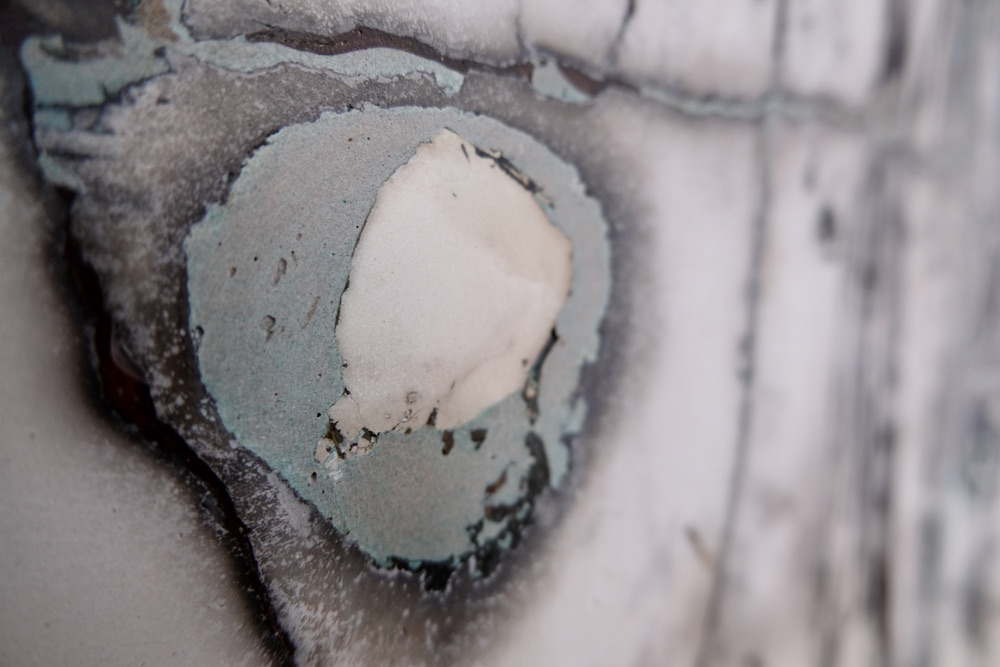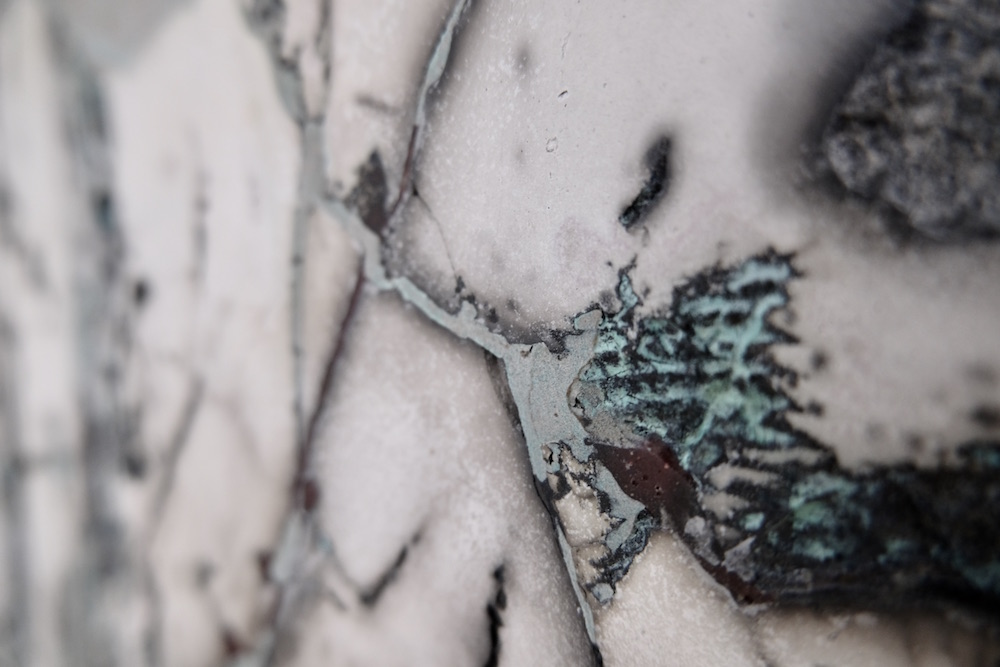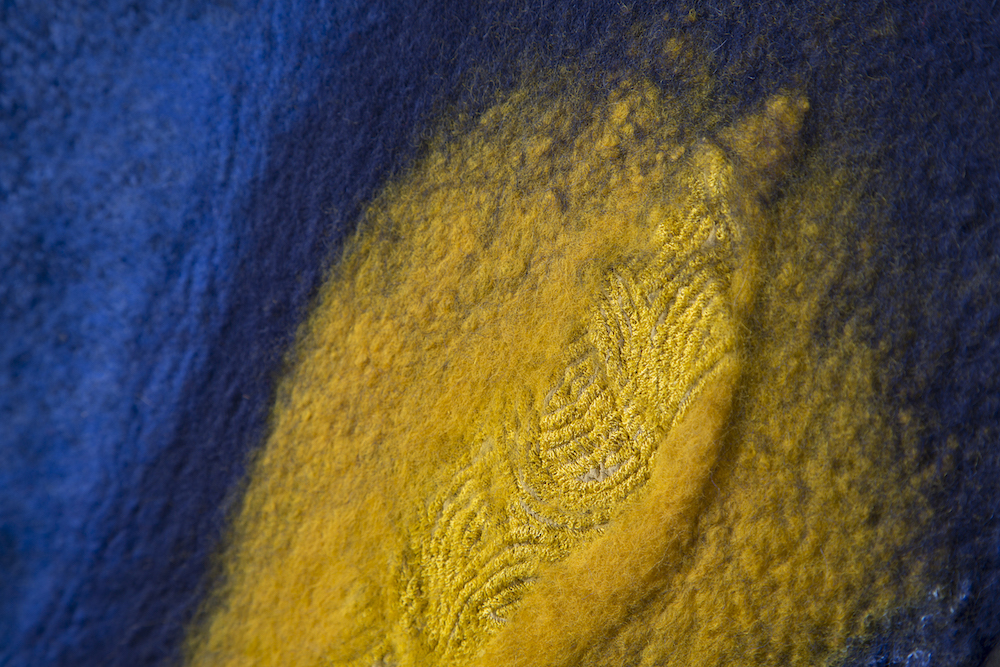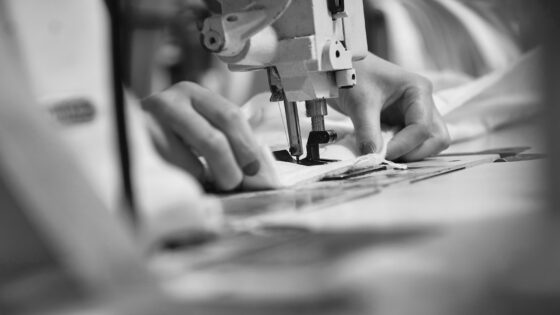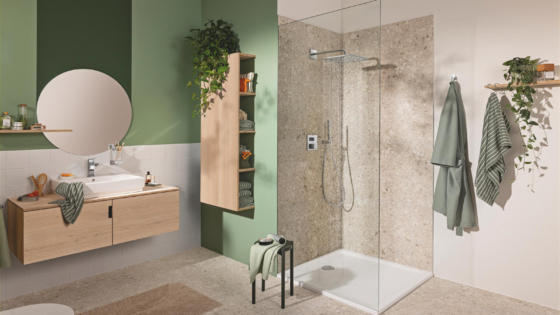Driving the industry to search for and specify sustainable art, Artelier explores sustainable artwork in luxury contexts…
The drive for sustainability has grown tremendously in the last few years, with individuals and businesses alike becoming committed to sustainable values.
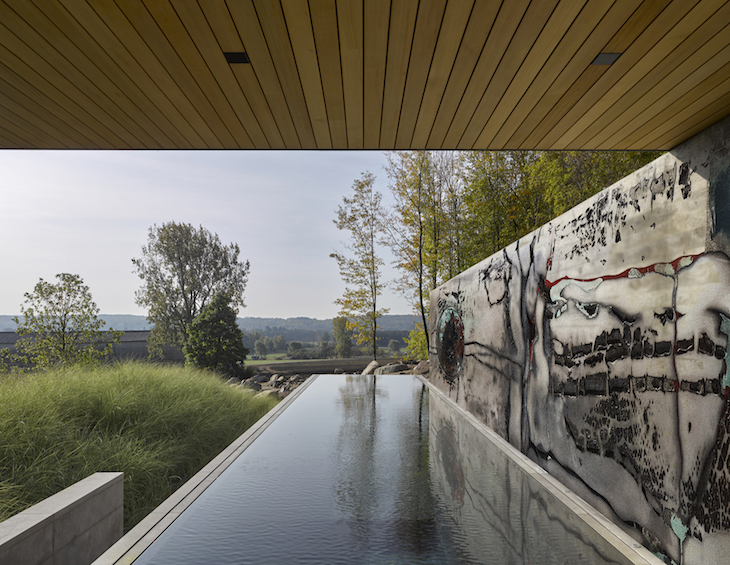
- Image credit: Artelier
- Image credit: Artelier
The drive for sustainability has grown tremendously in the last few years, with individuals and businesses alike becoming committed to sustainable values. What once was more of a fashionable trend has rightly become a major cross-sector movement, and increasingly diverse industries are promoting eco-conscious practices. Most importantly, consumers are holding companies accountable for their claims, and want them to do more than swap out plastic straws or reuse cups. This has led to a push for innovative new concepts, uses of materials, and structural changes, so that the needs of projects are met in a significantly more sustainable way.
Within sectors such as luxury hospitality, a major question has arisen over how to deliver the exquisite interior design that a discerning clientele have come to expect, whilst also being sustainable. Naturally, the two do not need to be mutually exclusive – much of cutting-edge luxury design now favours natural materials and a stripped-back simplicity, which lends itself to sustainable products. A key way of sustainably creating adding luxury to these spaces are intelligently curated artworks. Sustainable artworks can bridge the gap between creating a stunning aesthetic experience and promoting environmentally responsible design.
As art consultants, Artelier have discovered first-hand how art can enhance and deepen a project’s focus on sustainability. Here, Artelier’s curators offer their insight into the dilemmas faced by luxury industries, and explore how inventive artists can create sustainable artworks by transforming humble materials into stunning installations.
The dilemma of decorating sustainably
After the architectural and engineering efforts in new-build projects, it is critical for the interior design to likewise be sustainable, whilst creating the right aesthetic impression. Few luxury items, however, can offer sustainability, since often they are made from materials like precious metals and rare marbles. Artworks are in themselves luxury items, and can meanwhile be produced with full sustainability in mind – artists can take basic and sustainable materials and through their craftsmanship make them luxury items. Rather than being a ‘token’ sustainable element, a newly commissioned artwork can reflect the owner’s own sustainable philosophy as each aspect of producing the artwork can be transparently low-impact.
The idea of bespoke items and artworks has long been at the height of luxury, and so many private clients have supported artists through commissioning artworks. In their pursuit of the bespoke and one-off, patrons have championed low-volume craftsmanship for their willingness to pay for artworks to be hand-made specially for them. In recent years, technology has advanced so much that a similar visual effect can be achieved – eye-catching surfaces can be cost-effectively created by companies with faux metals, resins and plastics. Whilst they meet the tastes of clients and can be seductively beautiful objects, the materials used to create these effects are not sustainable. When private clients instead choose to invest in commissioned artworks, they not only receive an ultra-bespoke interior feature, but a significantly more sustainable option.
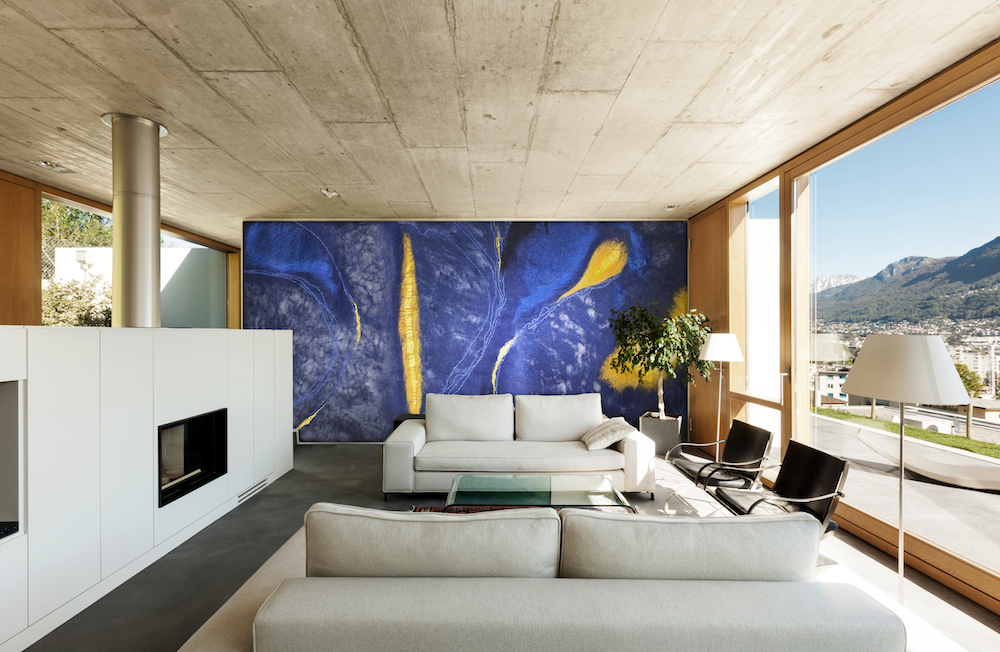
Image credit: Artelier
- Image credit: Artelier
- Image credit: Artelier
Natural materials
While some contemporary artists actively use ancient craft techniques, more broadly many artists authentically engage with sustainability through using exclusively natural materials. Taking humble and widespread materials such as wood, they are able to creatively transform them into fine art. The artworks communicate the natural beauty of earth’s resources, and deeply connect viewers with the environment by making them experience nature in new and surprising ways.
One such artist is Christian Burchard, who creates wood sculptures from a tree species native to the area surrounding his studio in Oregon, USA. His expressive carving creates poetic and dynamic sculptural compositions. He aims to show viewers the essence of the wood’s natural structures, allowing the material to ‘speak its own language’, rather than imposing onto it. Artelier commissioned a collection of Burchard’s work for superyacht Pelorus (115m). The client and the interior designer used a neutral palette within the interiors, as they wanted a pure and natural design that utilised organic materials. They approached Artelier for us to identify artists that were in tune with their own materials, and would contribute to the sustainable feel of the overall design.
Artist Stuart Ian Frost’s creates site-specific installations from natural, and often foraged, raw materials. Each installation is created specially for its landscape, and Frost seeks to evoke the particularities of the individual environment. He draws inspiration from local geographical features and the raw materials themselves, but also often looks to incorporate the culture and architecture of the area. Like Burchard, Frost’s artworks seek to present nature in an unfamiliar, yet illuminating way, encouraging the viewer to challenge their own perceptions of the materials. His large-scale sculptures playfully incorporate pattern and organic shapes to transform the raw materials, giving them a newfound vitality. Meanwhile, his smaller scale artworks use foraged natural materials, such as bird quills, and represent them in expressive geometric designs.
Found materials are also central to British multi-disciplinary artist Sir Richard Long, who uses basic materials like mud or rocks to create sculptures, paintings, and installations. In so doing, he pushes the boundaries of which materials are typically considered suitable for fine art. Many of his artworks are created while on walks in landscapes, a primordial engagement between man and earth, and are left to be reclaimed by nature. His gallery artworks likewise present a visceral engagement with natural resources, such as his paintings created from mud from the Riven Avon in England; Long uses his bare hands to paint, preserving his gestures by leaving his hand and finger prints visible.
In such ways, many artists are naturally resourceful and low impact, by their use of foraged and natural materials. Conceptually, many of these artists are also inspired by how the natural world can be represented to viewers, in a way that emphasises man’s harmony with nature rather than dominance over it. Within a sustainable project, these artworks bear special significance, as they symbolise the objective behind incorporating sustainability – a re-evaluation of how humankind interacts with the environment, and how we can better preserve and respect natural resources.
Sustainability in the world of hospitality
As modern, eco-conscious people travel the world, they seek hotels that are likewise committed to sustainability. Hoteliers and hospitality designers must respond to this demand, and while efforts to promote environmentally conscious operations like reducing washing or plastic waste are worthwhile, sustainability has to be a key concern from the initial stages of hotel design to be more deeply effective.
However, when considering the sheer scale of hotels and how hotel areas will be used, ensuring sustainability throughout the hotel poses more obstacles than in private spaces. Many materials, for example, need to be more hard-wearing: carpets that use synthetic fibres are easier to clean, and often need to be synthetic in order to comply with fire safety regulations. Meanwhile, while materials like marbles or metals can be used sparingly in private properties, they are simply not sustainable at the quantity required for hotels.
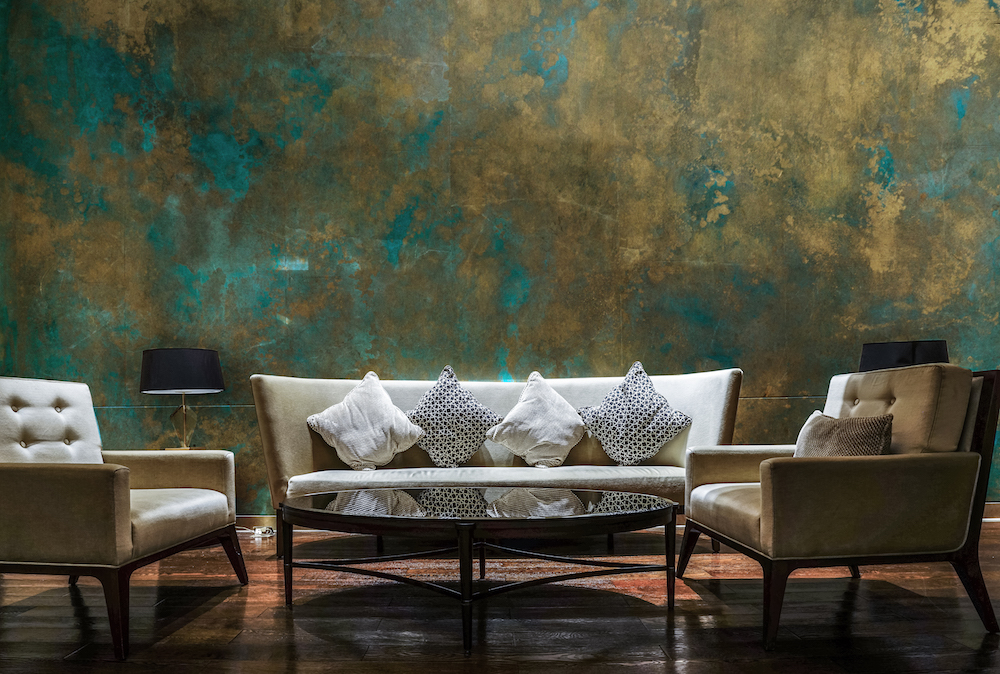
Image credit: Artelier
For a hotel project to be truly sustainable, sustainability has to be a core consideration from the inception of the project. It has to be considered in everything from structural materials and utilising natural sun and ventilation, to being rigorous in sourcing reputable interior suppliers who prioritise sustainable production. In order to make sustainable hotel design more than simply tapping into a trend, new hotels have focus on longevity – much negative environmental impact comes from the waste of replacing worn-out features.
Considering this level of care to incorporate sustainability, it is essential that decorative aspects are not an afterthought to the project. After great effort has gone into sustainable design solutions, artworks can be overlooked, and in reality not be that sustainable. Whilst on an individual basis each artwork’s sustainability may not be a major source for concern, together they can make a significant impact. If every room features artworks as well as the lobby, stairwells, and spa areas, irresponsible sourcing and using even small amounts of unsustainable materials can quickly add up. It is essential, therefore, to work coherently with specialist art consultants who are able to make sourcing sustainable art straightforward, and curate the entire collection for minimal environmental impact.
In addition, sustainable artworks bring many benefits to the hotel project. If a hotel decides to compromise on luxury materials in favour of sustainability, and opt for a more neutral, pared-back approach to interior design, the artwork can become the accent or focal point in the space. Sourcing art is further a great opportunity for supporting local artists, as artworks can be created from local materials and shipping costs are minimised. Supporting sustainable artists also makes for an engaging way for the hotel to promote its values and reflect its context.

Image credit: Artelier
Communicating sustainability through art
With the move towards environmental concern, many mass-producing companies have tried to meet this demand by providing ‘sustainable’ products. However, is there really space for this in the future, when increasingly the move towards sustainability goes beyond natural materials, but also sustainable practices in the studio? Clients are trying to achieve a sense of connection in their projects, and so the individualism of makers is in itself becoming increasingly more valued. Bespoke artworks are a more authentic and personal way of decorating. A specially commissioned artwork can symbolically convey the central concerns of a client, and communicate their focus on sustainability.
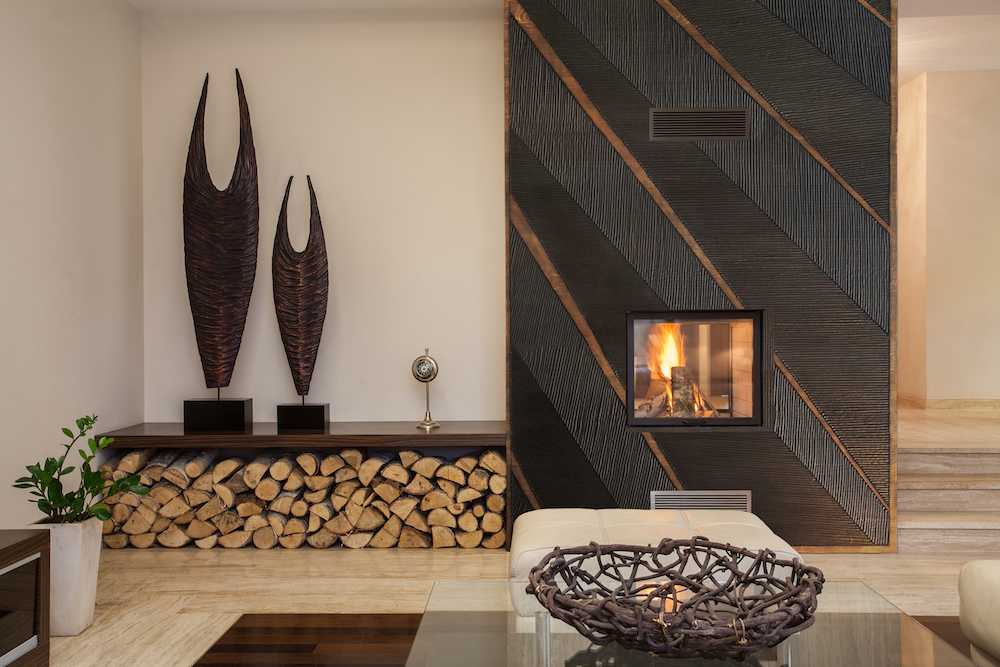
Image credit: Artelier
Ever since artworks were created by ancient civilisations, artists have used their work as a traditional form of visual communication, that goes beyond simply decorative enhancement. Art engages the viewer’s attention and creates atmosphere, producing an immediate and non-verbal understanding. A basic material transformed into a large-scale art installation instantly conveys to viewers the artist’s commentary on man’s relationship with the natural world. For instance, in a commission for the headquarters of a company at the forefront of recycling innovation, Artelier commissioned a mobile sculpture that embodied the company values. Created from sustainable steam-bent wood, the mobile constantly evolves and transforms, representing the concept of recycling forms.
Art offers a way to combine luxury with truly sustainable practices, and is one of the few products to be able to do so. But it more than simply decoration – art is able to tell a story. It communicates the deeper essence of the project, and is an evocative way of representing its sustainable values. The skill of the art consultant is to be able to source artworks that stay true to the project’s commitment to sustainability, and curate them in such a way that conveys the message to a wider audience.
Artelier is one of the brands that has taken advantage of our Industry Support Package. To keep up to date with supplier news, click here.
Main image credit: Artelier

